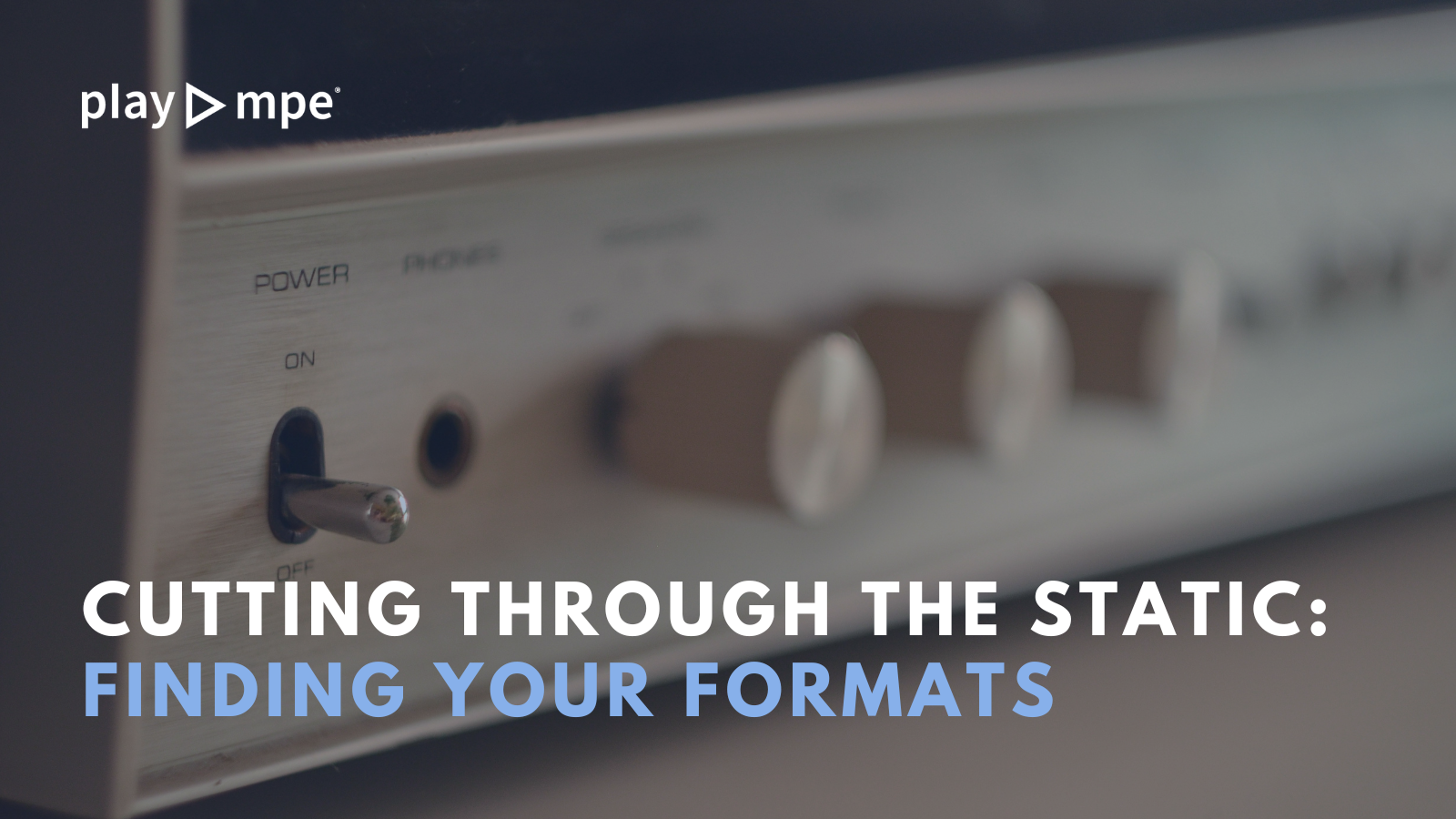Finding your formats
In our last blog, we broke down the basics of radio formats. Check it out here.
To be perfectly candid, there is going to be some nuance to navigating radio formats and figuring out where you fit best. The good news is that if you fit into one… you’ll likely fit into a handful of others as well!
While every station is unique and every programmer has their own approach, some formats tend to share similar sounds, audiences, and even chart space. Knowing where the overlaps are can help you make the most of your radio outreach.
Birds of a feather…we go together
Radio demands specificity – you should know the format for your music and stick to it. But what if we told you that certain formats tend to stick together? For example Americana, Triple A, and Non-Commercial are best buds! Those 3 formats are bundled together, or mixed and matched all the time.
Of course targeted promotion is key, but casting a wider net always holds more opportunities. Don’t limit yourself too much and branch out where you can!
Here are a few common format pairings that often go hand-in-hand:
Americana, Triple A, and Non-Comm: As mentioned, these three are like the cool older siblings of the radio world. If your music is rootsy and lyrically-driven, this might be your trio.
CHR (Top 40) and Hot AC: If you’ve got a polished, pop-forward release, it’s likely to land well across both formats. CHR leans younger and more current, while Hot AC reaches a slightly older demographic, but there’s plenty of crossover in sound.
Alternative and Rock: Depending on your edge, heavier alt tracks can easily bridge into rock playlists, particularly if they carry mainstream appeal. The two might even find their place in the Top 40 if the sound is just right…
Urban, Rhythmic, and Hip Hop: These formats often blend, especially when tracks have viral appeal. If your sound aligns with any one of them, it’s worth checking if the others are a good fit too.
Country and Christian: Believe it or not, there’s some crossover here, particularly for songs with storytelling, inspirational tones, or Southern roots. Sometimes Country crosses over into the Top 40 space, too!
The bottom line? You don’t have to box yourself in. Radio formats might look rigid on paper, but there’s flexibility if you approach them strategically. Check out what your favourite stations are spinning, how they categorize their format, and which artists are charting across multiple spaces. That’s your cue to explore more than one avenue.
Right place, right time
As with most other things – your timing matters. Especially when it comes to targeting radio! Of course there’s room for trial and error, but here’s what we know generally about programming schedules:
Morning Drive Time (6am-10am)
Midday hours (10am-3pm)
PM Drive Time (3pm-7pm)
Evening (7pm-Midnight)
Overnight (Midnight – 6am)
It’s generally best to focus on office hours when programmers are working. That being said, some stations may be programmed by the on air hosts for their specific shows. If you understand a typical station schedule, it should help inform the send times for your promotional campaign.
Now you’re ready to rock AND roll
Once you’ve identified your core formats and those adjacent opportunities, you can start mapping out a release strategy. Try to customize your pitch slightly for each format. Even a line or two in your campaign email that references the station’s typical sound can go a long way.
Don’t forget to watch your data! Keep track of where your track is gaining traction. If you start seeing spins from unexpected formats, follow that momentum and keep on sending!
Programmers notice when you’ve done your homework. If your music is a fit for their format.. and two or three others, you’ve already got more doors to knock on. Start promoting now!
Still not sure which common formats you might venture into? Set up a free 1:1 chat with our industry experts to get a second opinion! Reach out to support@plaympe.com.
